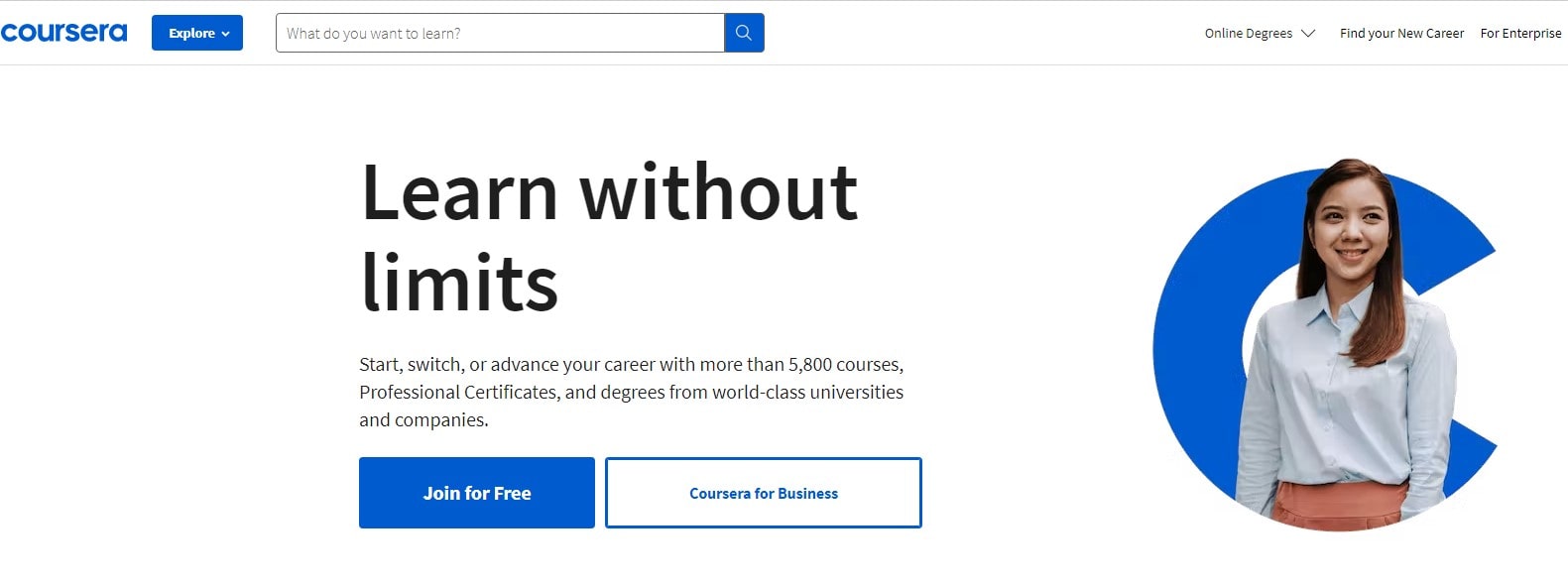Dream of conquering the marketing world as a Chief Marketing Officer (CMO)? ? Look no further! You will be given the knowledge, abilities, and insights required to move up the corporate ladder and obtain the coveted CMO position by reading this in-depth guide on “How To Become A Chief Marketing Officer (CMO).”
We’ll delve into the nitty-gritty of a CMO’s tasks and goals, exploring:
- Essential skills and qualifications
- Key responsibilities and daily activities
- How to build a stellar marketing career
- Tips for continuous growth and development

As a bonus, we’ll also highlight the importance of Plerdy UX analysis in enhancing marketing campaigns and customer experiences. Understanding user activity helps you optimize your digital marketing strategy and make data-driven decisions that boost business.
So, buckle up and prepare to embark on an exciting journey toward becoming the marketing maestro you’ve always aspired to be! With our guidance, you’ll be poised to make your mark in the ever-evolving marketing world, steering the company toward new heights and unparalleled achievements.
What Do Chief Marketing Officers Do?
In the corporate arena, Chief Marketing Officers (CMO) wear multiple hats, steering the organization’s branding and promotional strategies. As the principal architect behind the company’s marketing endeavors, the CMO is responsible for crafting an engaging narrative and driving customer acquisition.
One of the CMOs’ primary tasks is to analyze market trends and consumer behavior to identify growth opportunities. They masterfully tailor campaigns that resonate with target audiences, using a mix of traditional and digital media channels. Adept at juggling priorities, these marketing mavens oversee a variety of initiatives, such as:
- Product launches
- Advertising campaigns
- Public relations efforts
- Social media management
- Content marketing strategies
A skilled CMO harnesses the power of analytics to measure the effectiveness of marketing campaigns, fine-tuning them to maximize ROI. They develop long-term goals and integrate marketing strategies with the company’s mission and vision, with other top executives as key decision-makers.
Moreover, CMOs foster a culture of innovation within their teams, encouraging creativity and pushing the boundaries of marketing techniques. By staying current with industry best practices and embracing novel approaches, these trailblazing leaders propel their organizations to new heights, bolstering brand visibility and loyalty. In essence, the Chief Marketing Officer is the guiding force that navigates the company’s voyage through the ever-evolving marketing world.
What Should a CMO Know About Traffic Channels and Data Analytics?

For a Chief Marketing Officer (CMO), understanding the intricacies of traffic channels and data analytics is pivotal in crafting winning marketing strategies. Savvy CMOs recognize the potential of different channels to drive website traffic and generate leads, thereby fueling growth and bolstering the bottom line.
To optimize their marketing efforts, CMOs must be proficient in assessing the performance of various traffic sources, such as organic search, social media, paid advertising, and referrals. By closely monitoring these channels, they can allocate resources efficiently and fine-tune campaigns to maximize return on investment.
Harnessing the power of data analytics, CMOs can unearth valuable insights that inform decision-making and help shape marketing strategies. Some key areas to focus on include:
- Identifying high-converting traffic sources (SEO, Google Ads, Facebook, Instagram, etc.)
- Assessing audience engagement metrics
- Evaluating content performance
- Tracking customer journeys and attribution
One shining example of a successful marketing campaign is the renowned “Share a Coke” initiative by Coca-Cola. By personalizing their products with popular names, the company struck a chord with customers, driving sales and fostering brand loyalty. Leveraging data analytics, the CMO identified the target audience’s preferences and tailored the campaign accordingly, ensuring maximum impact.
In conclusion, a well-versed CMO should deeply understand traffic channels and data analytics. By leveraging this knowledge, they can design and execute robust marketing campaigns that catapult their organization to new levels of success.
Essential Qualifications and Skills

Embarking on a career as a Chief Marketing Officer (CMO) requires a blend of qualifications and skills vital for steering an organization’s marketing efforts. As the top marketing executive in a company, a CMO must possess diverse capabilities to guide its team and ensure success.
A solid academic background is often the foundation of a thriving marketing career. Earning a bachelor’s degree in marketing, business, or a related field is a significant first step. Some CMOs may pursue a master’s degree, such as an MBA, to further hone their expertise and expand their professional network.
In addition to formal education, professional certifications in marketing can prove invaluable.
Some essential skills for a CMO include:
- Leadership and communication skills: Motivating and guiding your team while effectively conveying ideas to stakeholders is paramount.
- Data-driven decision-making abilities: Analyzing data to develop targeted marketing strategies that yield results is essential.
- Creative problem-solving: Identifying unique solutions to overcome marketing challenges is critical in today’s fast-paced business environment.
Real-world experience is another crucial aspect of a CMO’s qualifications. Starting in entry-level marketing roles, such as marketing coordinator or specialist, can provide the hands-on experience necessary to understand the ins and outs of the industry. As your career progresses, you’ll have opportunities to take on more significant responsibilities and managerial roles, eventually paving the way for the coveted CMO position.
Alongside professional experience, it’s essential to develop a strong personal brand. Actively participating in industry events, engaging with peers on social media, and contributing to thought leadership in your field can help establish your reputation as a skilled marketing expert.
In summary, the journey to becoming a CMO requires a combination of academic credentials, professional certifications, diverse skill sets, and relevant experience. By focusing on developing your expertise in these areas, you’ll be well-prepared to tackle the challenges and responsibilities of a Chief Marketing Officer.
Gaining Relevant Experience

For aspiring Chief Marketing Officers, acquiring relevant experience is the key to unlocking the door to a successful career. Gaining hands-on experience and broadening your skillset will equip you with the tools necessary to excel in the dynamic marketing world. By strategically building your resume, you can accelerate your journey toward the coveted CMO role.
Begin by dipping your toes into entry-level marketing positions like marketing coordinators or specialists. These roles provide a solid foundation in marketing principles and practices, allowing you to understand the industry landscape thoroughly. Then, as you grow in your CMO career, seek opportunities to work on diverse projects and expand your skills in digital marketing, content creation, and data analysis.
Be bold in branching out within the marketing spectrum to develop industry-specific marketing expertise. Working in various sectors – from technology and healthcare to retail and finance – will give you a well-rounded perspective on how marketing strategies can be tailored to unique audiences and goals. This adaptability will serve you well when faced with the multifaceted challenges of being a CMO.
Networking with marketing professionals is another essential component of gaining relevant experience. Cultivate relationships with mentors, colleagues, and industry influencers to learn from their experiences and insights. Attend conferences, workshops, and webinars to stay informed about the latest trends and best practices, all while expanding your network.
Some tips for building relevant experience include:
- Volunteering for marketing projects or initiatives in your organization
- Seeking out internships and co-op opportunities to gain hands-on experience
- Joining marketing-focused clubs, associations, or meetups in your area
- Creating a personal marketing project or blog to apply and showcase your skills
In conclusion, the path to becoming a CMO is paved with experience, adaptability, and continuous learning. By starting with entry-level roles, exploring various industries, and forging strong connections within the marketing community, you’ll be well on your way to transforming your marketing career into a successful CMO tenure. So, roll up your sleeves and dive headfirst into the exciting marketing world – the sky’s the limit!
Developing a Strong Personal Brand

A powerful personal brand is crucial for anyone looking to climb the ladder to the esteemed CMO position. As a marketing professional, your brand reflects your expertise, values, and personality – the unique blend of qualities that sets you apart from the competition. By crafting a compelling personal brand, you pave the way for new opportunities and enhance your visibility in the marketing world.
First and foremost, establish a professional online presence. Create a polished LinkedIn profile, an engaging Twitter account, and a personal website showcasing your marketing skills and accomplishments. Consistency is key.
Next, leverage content creation to solidify your authority in the marketing field. For example, publish insightful articles, record podcasts, or create engaging videos that showcase your knowledge and thought leadership. By sharing valuable content, you position yourself as an expert in your niche and attract the attention of industry influencers and potential employers.
Speaking engagements and industry events are excellent opportunities to raise your profile and build credibility. Present at marketing conferences, host webinars, or participate in panel discussions to share your expertise and expand your network. Engaging with your audience and exchanging ideas with peers can elevate your brand.
Here are some strategies for developing a strong personal brand:
- Set clear objectives and define your unique selling proposition
- Cultivate a distinctive visual identity, including a logo and color palette
- Regularly engage with your audience through social media and email newsletters
- Collaborate with other industry professionals on joint projects or guest contributions
In conclusion, becoming a CMO requires a strong personal brand. Maintaining an online presence, sharing quality information, and attending industry events will build your marketing expertise. With a powerful personal brand in tow, you’ll be well-positioned to tackle the challenges of a CMO role and thrive in your marketing career.
Pursuing Professional Development Opportunities

Pursuing professional development opportunities is necessary as a marketing professional with sights set on the Chief Marketing Officer role. These experiences expand your skillset and keep you abreast of the ever-evolving marketing world. You can stay competitive and prepare for CMO difficulties by constantly seeking growth and learning opportunities.
Industry conferences and workshops can expand your horizons. At these events, marketing gurus, thought leaders and other professionals share ideas, best practices, and innovations. These events let you learn about new trends and technologies and network with influential people.
Earning advanced certifications can be another fruitful investment in your professional development. Certifications from reputable organizations, such as the American Marketing Association or Google Analytics, can enhance your resume and demonstrate your commitment to staying ahead of the curve. In addition, these programs often cover specialized marketing disciplines, such as digital marketing, content strategy, or marketing analytics, enabling you to acquire valuable skills and knowledge that can be applied to your current and future roles.
Staying in the loop with marketing trends and technologies is critical for your ongoing development. Subscribe to industry blogs, newsletters, and marketing podcasts to keep your finger on the pulse of the latest developments. Engaging with thought-provoking content will spark new ideas and inspire you to innovate in your marketing practice.
Consider joining professional organizations to access a wealth of resources and networking opportunities. Some popular marketing associations include:
- American Marketing Association (AMA)
- Association of National Advertisers (ANA)
- Content Marketing Institute (CMI)
- Digital Marketing Institute (DMI)
In conclusion, pursuing professional development opportunities is essential to a thriving marketing career. By attending conferences, earning certifications, keeping up with trends, and joining professional organizations, you can expand your skillset and stay ahead in the fast-paced marketing landscape. Then, as you continue to grow and evolve as a marketing professional, you’ll be well on your way to becoming a CMO.
Becoming a Thought Leader in the Marketing Field

Aspiring Chief Marketing Officers must strive to become thought leaders in marketing, carving out a unique niche and cultivating a reputation for expertise and innovation. By sharing groundbreaking insights and contributing to industry conversations, you can establish yourself as an authority figure and make a lasting impact on the marketing landscape.
Kickstart your thought leadership journey by identifying your niche. Consider your passions, strengths, and areas of expertise when selecting a specific aspect of marketing in which you can truly excel. Your niche should align with your professional goals and resonate with your target audience, allowing you to build a dedicated following.
With your niche in hand, create high-quality marketing content demonstrating your deep understanding of the subject matter. For example, write insightful articles, conduct in-depth research, or host webinars to share your knowledge and ignite discussions within the marketing community. Focus on producing content that is both engaging and informative, delivering value to your audience and fostering meaningful connections.
Collaborate with other industry experts to further enhance your thought leadership status. For example, guest blogging, podcast appearances, or co-hosting events can expand your reach and expose your insights to a broader audience. As your influence grows, you’ll attract more opportunities to collaborate and showcase your expertise.
Leverage social media to engage with your audience, share your content, and participate in relevant discussions. By actively contributing to online conversations, you’ll solidify your position as a thought leader and foster genuine connections with your followers.
Some actionable steps to become a thought leader in marketing include:
- Regularly publishing insightful, well-researched articles or blog posts
- Participating in industry panels, marketing workshops, and conferences
- Staying updated on the latest marketing trends and technologies
- Building a robust online presence through social media and personal branding
In summary, becoming a thought team leader in marketing is a powerful way to distinguish yourself from the competition and pave the way for a successful CMO career. By identifying a niche, creating valuable content, collaborating with other experts, and actively engaging with your audience, you’ll build a strong foundation for thought leadership and a lasting impact on the marketing world.
Preparing for CMO Responsibilities

To successfully transition into a Chief Marketing Officer role, it’s crucial to prepare for the wide array of responsibilities that come with the position. As a CMO, you’ll be at the helm of your organization’s marketing efforts, driving growth, developing long-term strategies, and overseeing a diverse team of marketing professionals. To ensure a smooth transition, focus on honing the necessary skills and experiences that will set you up for success in this coveted role.
Begin by cultivating strong leadership abilities, as a CMO must inspire and motivate their team to achieve exceptional results. This involves fostering a collaborative work environment, setting clear expectations, and providing guidance and support when needed. Embrace opportunities to take charge of projects and teams to build your confidence and expertise in leading others.
Next, develop a keen understanding of data and analytics, as informed decision-making is paramount for a CMO. This can help you spot patterns, evaluate marketing initiatives, and optimize your company’s marketing. Finally, learn the latest analytics tools and platforms to enhance your decision-making capabilities.
A CMO must also be adept at managing budgets and allocating resources efficiently. This requires a solid grasp of financial management principles and the ability to evaluate various marketing initiatives’ return on investment (ROI). Strengthen your financial acumen by taking courses, attending workshops, or collaborating with finance professionals in your organization.
Focus on the following areas to prepare for CMO responsibilities:
- Leadership and team management
- Data-driven decision-making and analytics
- Financial management and budgeting
- Long-term strategic planning
- Cross-functional collaboration and communication
- Crisis management and problem-solving
Finally, hone your communication skills, as a CMO must effectively convey the organization’s marketing vision to internal and external stakeholders. This includes presenting to executives, collaborating with cross-functional teams, and engaging with customers or clients. Engage in public speaking opportunities and refine your presentation skills to ensure you can deliver compelling messages with clarity and confidence.
In conclusion, preparing for CMO responsibilities involves cultivating a diverse skillset encompassing leadership, analytics, financial management, communication, and more. Focusing on these areas can prepare you for the rigors of a CMO position and help your company’s marketing success.
Navigating the Job Market

Navigating the job market as a prospective Chief Marketing Officer (CMO) can be exciting and challenging. Adopting a strategic approach highlighting your unique strengths and experiences is essential to stand out and land the perfect role. Here are some tips to help you make waves in the marketing job market and ultimately secure a rewarding CMO position.
First and foremost, polish your resume to showcase your marketing expertise and leadership qualities. Emphasize relevant accomplishments, such as successful campaigns or projects, and quantify your impact whenever possible. Next, tailor your resume to each CMO role, highlighting how your skills and digital marketing experiences align with the organization’s needs and goals.
In addition, build a strong online presence by leveraging marketing professional networking platforms like LinkedIn. Optimize your profile with a compelling summary, colleague endorsements, and examples of your work. Finally, join industry groups and thought leaders to show your marketing passion and learn about new marketing trends.
To broaden your job search, consider the following strategies:
- Tap into your professional network for referrals and job leads
- Partner with executive search firms specializing in marketing roles
- Attend industry events, conferences, and workshops to expand your network
- Utilize job boards and websites focused on marketing and executive roles
Prepare diligently for interviews by researching the company, industry, and competitors. Develop a clear understanding of the organization’s marketing challenges and be prepared to discuss how your skills and experiences can address these issues. Use storytelling techniques to share relevant anecdotes demonstrating your leadership abilities and marketing prowess.
Finally, maintain a growth mindset and be open to diverse opportunities. As the marketing landscape continues to evolve, the role of a CMO may vary across industries and organizations. Therefore, embrace new challenges and be willing to learn from each experience, as this adaptability will ultimately make you a more attractive candidate for future CMO positions.
By following these tips and strategies, you’ll be well-prepared to navigate the job market, positioning yourself as a top contender for coveted CMO roles in the ever-evolving marketing world.
Bottom Line
As we wrap up our comprehensive guide on “How To Become A CMO,” it’s time to take action and chart your course toward marketing leadership. By diligently honing essential skills, accumulating valuable experiences, and pursuing advanced education, you’ll be well-equipped to conquer the C-suite and steer your company’s marketing initiatives to success.
Remember, a great CMO is adaptable, agile, and constantly learning. Staying up-to-date with industry trends, embracing new marketing paradigms, and mastering data analytics will be vital in your journey. Connect with seasoned marketers, attend industry events, and participate in relevant online forums to stay in the loop and expand your network.
Your journey may be long, but keep sight of the bigger picture. As you progress in your career, seize opportunities to implement innovative strategies, manage marketing teams, and demonstrate your ability to drive revenue growth. Stay focused on your goals and remain committed to continuous self-improvement. You’ll be at the helm of your company’s marketing department in time.
To further elevate your marketing game, consider using cutting-edge tools like Plerdy, which offers in-depth UX analysis to help you create seamless and engaging customer experiences. Plerdy’s ideas will help you become an indispensable asset to any company.
In conclusion, becoming a CMO is a journey filled with challenges and opportunities. Embrace them, and you’ll be on the right path to a lasting impact in marketing. The road ahead is yours to travel, so let’s get started!
